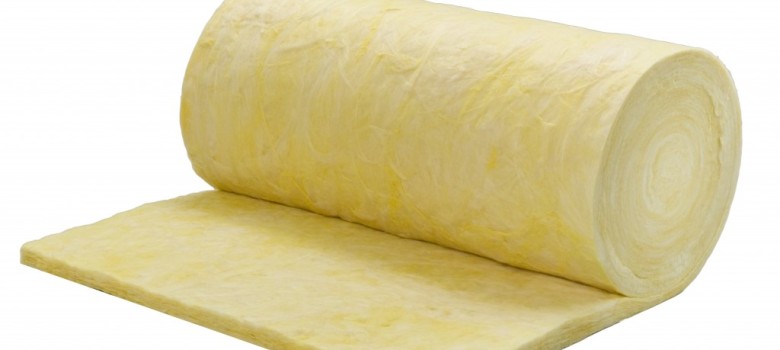
So the time of year has come where the weather is getting colder and we are all wondering how best to keep our homes warm. Something everyone should consider getting is loft insulation.
In the following blog, I look at the current cost of insulating your loft space using various different materials. Installing any of these substances in your loft to the depth detailed in the table below should help you achieve the u-value of 0.16 W/m2k. This is the depth as prescribed by building regulations – so if you manage to hit this and you are doing well!
A quick word of warning
First thing to note is that all of the calculations are based on my own workings – every insulating material will specify the depth of insulation required to attain a certain U-value – so please bear in mind my calculations are to be used for a guide only – always refer to the manufacturer’s notes for the most accurate information!
The other thing to say is that I have mentioned a range of products from different suppliers in the table below and to be able to compare them we have calculated the cost based on one metre squared of material.
The issue however, is that suppliers sell wool insulation in rolls or slabs, and the rolls they sell are all pretty much the same volume. This means that if the wool is thicker, it will tend to cover a smaller area than a roll of thinner insulation. For example Wickes fibreglass 200mm thick covers 5.93m2, while the 100mm product covers 14.13m2.
Now, fibreglass wool requires a total depth of 300mm, so if you bought two packs of 100mm it would not be deep enough, while two packs of 200mm would be in excess of what you need.

Conversely if you just went for the 100mm thick insulation you would need 9 packs of it which is £265. So you can see that even though you get a better price per square metre using the different thickness in the table, the actual cost to get a job done depends on your square footage – so you need to work this out for yourself to see which is best!
The final thing to note is that this list is by no way exhaustive – there are lots of other insulating products out there!
Anyway take a look at the table – this shows some of the ways you can achieve a U-value of 0.16 in your loft space.
Table accurate of 23rd Feb 2015.
Briefly discussing the Results in the table
The top result is obviously the cheapest, however they are irritants and so are difficult to fit yourself as a DIY job. Likewise if you ever need to venture into the loft and you come in to contact with it, it can cause itching and sneezing.
The Sheep Wool Rich, Thermafleece insulation is the product we sell in our shop, as well as Natrahemp (made from Hemp) and Supaloft (made from recycled bottles), it is expensive, but is easy to handle (you can even have a quick lie down in it if you get tired), it also has superior moisture absorption qualities than the other products.
So there you have it. Let us know if you have any comments – or feel free to share you insulating know-how below!

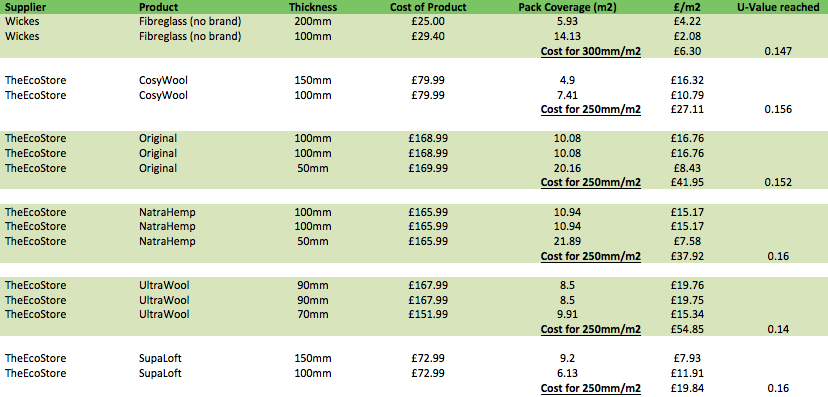



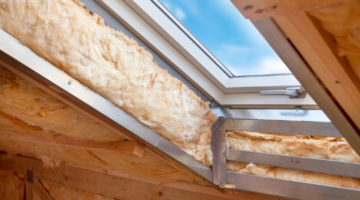
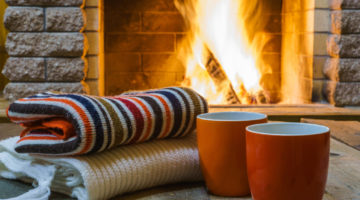
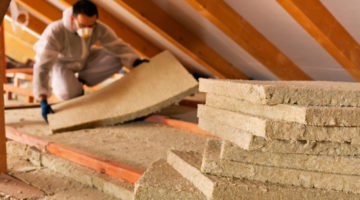






How does hemp (in batts (or loose?)) compare with sheepswool in terms of cost, thermal conductivity, moisture resistance and attractiveness to rodents/moths (mentioned elsewhere on your helpful website)?.
Thank you, EC
Hi EC, so Hemp has essentially the same thermal conductivity as sheep’s wool – so using a similar thickness will provide similar results. In addition, Hemp is also Hydroscopic meaning it will absorb a certain amount of condensation without any loss to its thermal performance, much like sheeps wool. Cost wise, looking at Black mountain who do both products – the costs are identical. And both products will be treated to ensure they are resistant to attach from rodents and moths.
Both products are 100% natural so are better for the environment than mineral wool – and they are far nicer to handle. I had to remove my existing mineral loft insulation last year and my arms were itching for days after!
Sheep wool, Sheep wool, Sheep wool every time. A pleasure to work with, it breaths better than other wool materials and also has near identical insulating properties.
Hi Laura, interesting you say that. My husband and I are about to move back to the UK, having lived in France for 15 years. The renovated house we lived in had that fibre glass stuff and we didn’t want to go near it. Has sheep wool insulation really made a difference to your home? Also did you get any grants to help pay for it as it appears to be quite pricey. Thank you.
Hi Juliet, the sheep wool made a huge difference to the warmth of our house, although I guess other wool insulation products would do the same? We didn’t get any help to cover the costs to be honest, but we would recommend getting it anyway since even though it costs more, payback isn’t that long! Obviously if you can get a grant then that would be great too!!
I am about to remove fibreglass loft insulation and replace with wool. I am concerned about ceiling spot light fittings that protrude into the loft. Can I put insulation around the fitting?
You can buy covers specifically for this purpose, or you can simply use terracotta flower pots turned upside down.
Thanks for the useful Blog. Do you know anything about the fire resistance of each of these insulation materials?
Hi Matt.
We’d recommend checking out individual manufacturers’ data sheets. Most of them should be available online!